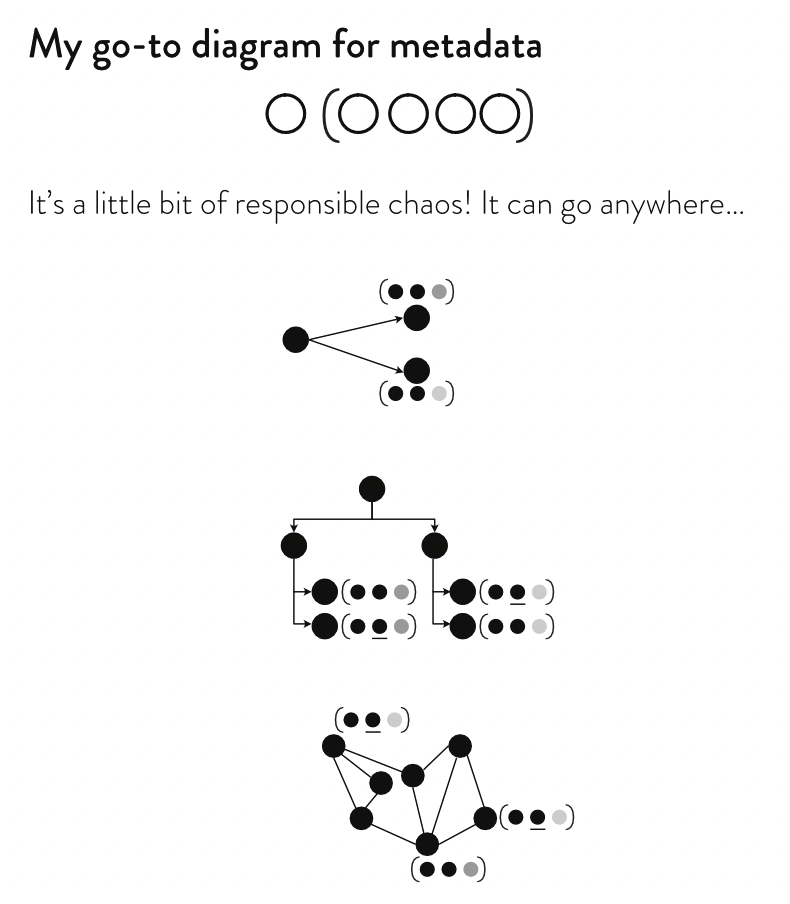Metadata
Data supporting data
Data has metadata — data about the data. It helps the data be findable and acts as a low-grade navigation. It’s a data point’s own subset of context, enriching the meaning without formalizing the connectome.
When the data point is already a part of a connectome in use, metadata becomes supplemental information — additional context without having to go through the rigor of developing level, strata, or lens. It helps to triangulate the data and aim towards the quality of truth.
In a way, metadata can be seen as organic growth of data. It’s not formal, and it’s not kept in step with other data constructs to help develop information scent and pattern. Instead, it’s burgeoning where it needs to burgeon. It’s a tiny little interlude of responsible chaos, happy to help if it can help and waiting to see how other nodes of responsible chaos might unfold and work in sympathy to develop a new pattern.
connectome, context, garbage-in, implicit process, lenses, levels, meaning, strata
